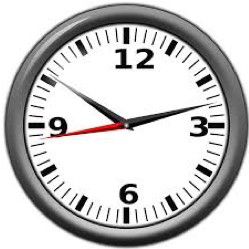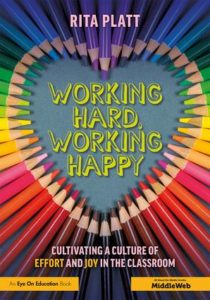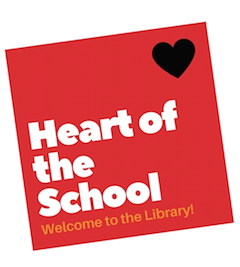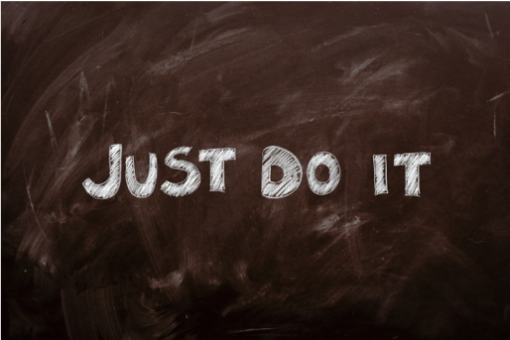To Rev Up the Learning, Get Students Moving!
A MiddleWeb Blog
 Get Moving!
Get Moving!
Flexible seating is all the rage these days. I certainly love it! At my school we have desks with wiggle bars, bouncy seats, wobble chairs, and are looking into getting desks with pedals.Flexibility is great and the kids love the choices.
But, every time I buy this type of furniture, it comes with a shadow of a question, “Why do our kids sit down so long? Why do we need ‘action furniture’ to keep them moving?”
Movement Matters
The research on how physical activities bolster both learning and overall well-being is strong, clear, and convincing. Even incorporating simple movement activities into instruction can have positive effects on students including:
- increased focus.
- the ability to process new information faster.
- increased retention of information.
- decreased stress.
- increased sense of well-being and joy.

Nobody should have to get used to sitting all day, least of all a student in the middle grades. These kids are bundles of energy. We’ve got to let them move, move, move!
Simple Strategies
Below are five easy ways to get kids up and out of the seats while learning. Give them a try!
1. Cut it Up
This is a simple tweak to the good-old-fashioned worksheet. Say, for example, you are asking students to do a set of math problems or to answer questions at the end of a story or informational text. Instead of giving students the entire worksheet, cut it into sections and place each section in a different part of the room.
You can do this by simply showing kiddos where to find each section (section one on the teacher desk, section two on the chalkboard ledge, question three near the sink) or you can make a scavenger hunt where the clues to finding each section are embedded on the page.
This is not only good in terms of getting kids to move, but it’s also helpful for students who have anxiety or fear of failure. Giving them an entire worksheet can shut them down before they even begin. Allowing them to do their work in bite-sized chunks can be helpful.
2. Ten by Two
This method is a very simple way to think about how to organize your teaching so that kids are actively engaged at least once every ten minutes (at LEAST once…more is better!). If you are presenting through a lecture, movie, slideshow, or any other method where you are doing most of the work, be sure to build in stopping points that remind you to allow students to actively participate.

3. Give One, Get One
This strategy is really great for review, building positive relationships, capitalizing on students’ prior knowledge, and getting kiddos up and out of the seats. To make it work, have students get a sheet of paper and fold it in half the long way. Ask them to label the left side, “Give One!” and the right side “Get One!”
Then, give the class a prompt that is related to a lesson you are teaching or to a goal for your students. For example, in an 8th grade social studies class the prompt could be “What were the causes of the Civil War?”
Have students think about the answers and jot them down on the “Give One!” side. Then have them find and talk to three or four other students to “Give” them an idea and “Get” an idea to jot down on the right side of their paper.
Check out a video example here.
4. Snowball Fight
In a snow ball fight (a Wisconsin state sport) students write information, a problem, or a question on a sheet (or half sheet) of paper, wad it up to look like a snowball and throw it like a snowball! Students then scramble to pick up a “snowball.”
Once they have one, they open it and read what another student wrote. From there, students can talk to each other, form groups, or wad the papers up and throw them again.
Prompts might include: What is your favorite book and why? Write five ways we use fractions in real life? What is a question you have about our unit of study? What is your goal? Or anything else a teacher can think of. Including several colors of paper can add another variation you could put to good use.
Check out a short video of the strategy here.
5. Gallery Walk
In a gallery walk, sheets of poster-sized chart paper are posted around the room. Small groups of students start at a designated sheet and respond to the prompt written there. After a given amount of time, each group rotates to the next sheet, reads what the group before them wrote and adds to it. This is repeated until each group returns to their first chart and reads what their classmates had to say.
Much as is the case in the snowball fight strategy, this can be used with myriad prompts. Use it to review content, to elicit prior knowledge, to help students learn about each other, work on vocabulary, or almost any other objective you can think of. (It’s a good PD activity too!)
Take a look at a Teacher Toolkit video example here.
Plan a Little, Set Expectations, Then…Just Do It!
To optimize the chances for success, make sure you are very clear with expectations. For example, in “Snowball Fight” you will want to remind students that when you say, “Stop” they must stop. And you might also remind them to throw underhand. And no extra “weight”!
For all the strategies, you will want to talk with students about the voice level that is appropriate to the activity. If you don’t take the time to share expectations with students, there is a good chance they will not meet them. Which means that there is a chance you won’t want to try the strategy again. And that’s no fun.
None of these strategies are complex, and all can be easily adapted for use in any classroom. Remember, as the old Nike commercials wisely advised, JUST DO IT! Give it a try! If it doesn’t work quite how you wanted it to, don’t give up. Problem-solve and then try again! The concept of “failure” doesn’t resonate with me. So if something lands with a thud, consider it a part of the process that will end in success.
The bottom line is that allowing students the chance to get up and move as often as we can is not only good for them as learners, but it honors them as human beings! Most teachers wouldn’t want to be stuck sitting down all day, and we shouldn’t expect kids to either.
(For more great ideas, check out this MiddleWeb post from Cheryl Mizerny, “Getting Kids on the Move in the Middle Grades”.)
_______________________________________________






































